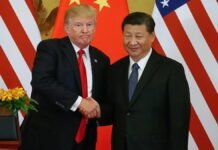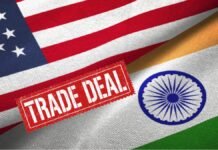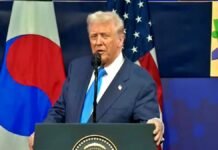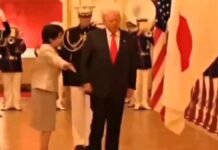
Key Points
- Nikki Haley urges Washington to view India as a prized free and democratic partner, not on par with adversarial China.
- Warns that undermining 25 years of U.S.–India strategic convergence would be a “strategic disaster.”
- Criticizes sanctioning India over Russian oil while China, a larger buyer, “avoids sanctions”; calls for policy recalibration.
- Says U.S.–India partnership is essential to counter China, diversify supply chains, and stabilize the Middle East.
- Highlights India’s capacity to manufacture at near-China scale in key categories like textiles, budget phones, and solar panels.
Washington: In a sharply worded opinion, former U.S. Ambassador to the UN Nikki Haley criticized the recent hardening of Washington’s stance toward New Delhi, arguing that India should be treated as a “prized free and democratic partner,” not an adversary like Beijing. She frames the U.S.–India relationship as a 25-year strategic project that has steadily aligned two large democracies across defense, technology, and economic ties. Rolling back this progress now, she warns, would be a “strategic disaster,” weakening the only regional counterweight with the scale to limit China’s dominance in Asia.
On Russia sanctions and policy consistency
Haley takes issue with penalizing India for importing Russian oil while China one of Moscow’s largest buyers has largely avoided comparable sanctions exposure. She argues this disparity undercuts logic and strategy: India’s rise, as a democracy with converging interests, does not threaten the free world, whereas the CCP-led expansion of China’s influence directly does. Her broader point: policy should push partners closer, not drive them away over asymmetrical enforcement.
Why India is central to U.S. strategy
- Counterbalancing China: India’s scale population, economy, military potential makes it uniquely capable of constraining Beijing’s regional ambitions. As India’s power grows, she argues, China’s room for coercive expansion shrinks.
- Supply chain diversification: India can help the U.S. derisk from China by ramping production in categories difficult to onshore quickly textiles, budget smartphones, and solar panels while the U.S. reshoring push advances in parallel.
- Middle East stability: With growing diplomatic and security footprints in West Asia, India can contribute to regional stability as Washington seeks to reduce direct troop deployments and financial burdens.
- Geoeconomic leverage: India’s geography sits astride critical sea lanes and energy routes vital to China; in a crisis, Indian alignment with the U.S. complicates Beijing’s calculus.
The strategic stakes for Washington
Haley’s critique lands at the intersection of values and interests. Treating India like an adversary risks:
- Slowing defense-industrial cooperation (co-development/co-production), tech transfers, and joint exercises that enhance deterrence in the Indo-Pacific.
- Fracturing emerging semiconductor, clean-energy, and telecom supply-chain pivots away from China.
- Weakening a coalition strategy reliant on overlapping partnerships U.S., India–Japan–Australia (Quad), minilaterals in the Indian Ocean, and coordination with Europe on critical tech and maritime security.
What recalibration could look like
- Align sanctions with strategic ends: Target Beijing’s high-impact revenue streams tied to Russia while carving practical pathways for India to transition away from Russian energy without rupturing ties.
- Accelerate trusted-supply-chain frameworks: Expand production-linked incentives, export controls coordination, and financing to shift manufacturing to India for designated sectors.
- Deepen defense tech ties: Fast-track co-production (e.g., jet engines, drones, maritime surveillance), streamline export approvals, and enlarge joint exercises focused on the Indian Ocean and Western Pacific.
- Invest in connectivity: Support India-linked corridors for energy, data, and logistics that reduce dependence on China-centric networks.
- People-to-people ballast: Expand student, research, startup, and diaspora programs that build durable, bottom-up U.S.–India linkages.
Bottom line
Haley’s message is blunt: confusing a pivotal partner with an adversary is bad strategy. If the U.S. wants resilient supply chains, a stable Middle East footprint, and credible deterrence in the Indo-Pacific, policy should lock in rather than “scuttle” the U.S.–India strategic trajectory.













































